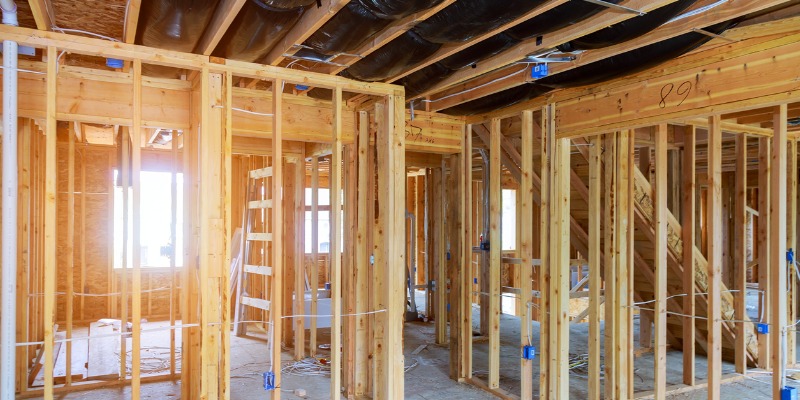
Oil furnaces heat your home using fuel. They look very similar to gas furnaces. However, oil is often cheaper. These furnaces can either be vented through a chimney (or a simple ventpipe). These steps will help you ensure the success of your new oil furnace.
A heating system that uses oil can be more costly than one that uses gas or electricity. An efficient furnace will save you money on fuel over the lifetime of your unit. An efficient furnace can cut down on your fuel consumption by up to 25% per year. Make sure to think about the maintenance that is required to maintain an efficient furnace.
You should change and clean your oil furnace's filter regularly to keep it running at its best. This will allow you to get rid of any sludge or debris that has built up in the filter. The manufacturer will provide instructions on how to clean the filter. Also, make sure the filter is of the same size. Your filter should be replaced every two years to prevent it from wearing out quickly. It's easy to replace the filter.

The heat exchanger is another part of an oil furnace which needs to be cleaned. This part is affected by soot from the furnace's burners. Your furnace's lifespan will be extended if you keep the heat exchanger clean. You should also keep the strainer clean. It is a cylindrical, cup-shaped, wire mesh screen. The strainer should only be cleaned with a soft brush.
You might need to adjust your draft regulator depending upon how you use the furnace. This will result in more efficient combustion. Contact a certified service technician if you have to modify the draft regulator. This is often only a matter of making a few minor adjustments.
A fan that induces draft can be also added. The fan is usually installed downstream from the furnace. The induced draft fan will increase your furnace's efficiency by increasing airflow.
An oil furnace is a complicated piece. A qualified HVAC professional should install and service an oil furnace. A service contract is required for oil furnaces. You will also need a service contract for an oil furnace. Leakage can cause high maintenance costs.

Many oil furnaces come with a control panel. To remove this panel, you must first remove the retaining screws at the housing's perimeter. After the access panel has been removed you will be able remove the metal panels. Usually, these panels are held in place by hooks or bolts.
Oil furnaces usually have a switch that turns the system on and off. Reset buttons can also be found on most oil furnaces. The reset button is normally labeled and located on either the motor or the stack.
Oil furnaces have a long lifespan. With proper maintenance, an oil furnace will typically last for twenty-five year. While an older oil furnace may need to be replaced, a newer model should be able to operate at a higher efficiency level.
FAQ
When do you have to pay the service/contractor bill?
The type of service is dependent on how much you pay. You would normally pay the contractor when the job is done. If you purchase a product, such a cooker for your kitchen, from a supplier you might only make payments after it has been tested and received.
Do you know of any way I could prepare before I negotiate?
Yes!
There are many different ways you can prepare yourself to negotiate.
One way is to make the terms and condition of the agreement.
Do I have to sign anything before starting work?
Yes, both parties must sign the SCA. This means that either party cannot change their mind after signing the SCA without the consenting party.
What is the scope of my SCA?
Your SCA will detail the scope of work, including the time it will take, how many materials are needed, what equipment is required, and whether special permits are necessary.
Is a service agreement a warranty?
A service contract does not constitute a warranty. It is an agreement between 2 parties to exchange goods. In this instance, the customer agrees that he will cover the costs of replacement or repair if the product doesn't perform as expected. This type of contract is also known as a maintenance contract.
Who provides a Service Agreement?
Your service agreement with your customer defines the services you will offer them. It outlines the customer's responsibilities, what you have to do for them, and when they have to pay you.
The service agreement also confirms if there are any additional fees involved for extra services.
All terms and condition of the service agreement should be stated. This includes payment terms, delivery times, warranties, and the like.
If you use this template, you will cover everything in the agreement.
What's the purpose for the service agreement?
The purpose of a Service Agreement is to define the terms under which a customer agrees to purchase goods from you. It also describes how you will offer those services to them as payment.
The most widely used type of this document is a Sales Order Form. Here you will list the items being purchased and their prices. Next, list any additional items in the order. This includes delivery costs, VAT and insurance. The final step is to indicate when the order must be delivered and for what amount.
Depending on the nature and purpose of the transaction, it is possible to use another document.
An invoice may be used if you provide a service and not a product.
You will probably need a Purchase Order Form to purchase items from another party.
Make sure to include all necessary information when you are creating a sales form.
Remember: The more detailed your sales order form is, the easier it will be for the buyer to understand.
Statistics
- (3) The contracting officer may provide for a contract price adjustment based solely on a percentage rate determined by the contracting officer using a published economic indicator incorporated into the solicitation and resulting contract. (acquisition.gov)
- (v) Place or places of performance of the prime contract and first-tier subcontracts estimated at $10 million or more, if known. (acquisition.gov)
- Don't take their anger personally, they are mad about the situation 99% of the time. (activatemylicense.com)
- (d) Contractor disputes related to compliance with its obligation shall be handled according to the rules, regulations, and relevant orders of the Secretary of Labor (see 41 CFR60-1.1). (acquisition.gov)
- While we offer all our high-quality services at competitive prices, we know that many who need our services are on fixed incomes, so we offer a 10 percent discount for seniors and military members. (homeservicecontractorsinc.com)
External Links
How To
What should a service arrangement include?
An SA is a key component of any business relationship. It defines what you want from each other, and how you will get it. The SA also specifies when and where you expect each party to fulfill its contractual obligations.
The key elements of a successful SA are:
-
Both parties will agree to the scope of work.
-
Information about payment terms, including the start and end dates for delivery of goods/services.
-
An agreed price for your project.
-
Any additional charges, like VAT, etc.
-
Whether there is anything else that needs to be discussed.
-
Who will take care of the job if it goes wrong?
-
How disputes can be resolved
-
What happens if one party breaches the contract.
-
What happens in the event of a dispute.
-
When does this contract go into effect
-
What happens when one of the parties doesn't perform?
-
How long can you wait to pay invoices
-
Who pays for expenses such as travel?
-
Where the money came from.
-
What happens when the client has a change of mind?
-
What happens when the supplier doesn’t show up.
-
Who has access during construction to the site?
-
What happens when the customer cancels a project?
-
What happens if the product is faulty.
-
What happens if the manufacturer refuses parts?
-
What happens when the equipment stops working?
-
What happens if a project takes longer than expected?
-
What happens if you don't complete the work within the set timeframe?
-
What happens if the final product isn't up to expectations?
-
What happens if the cost exceeds?
-
What happens to the materials if they are not delivered on-time?
-
What happens when the material arrives damaged.
-
What happens if the products aren't up to standard?
-
What happens if the job has to be canceled?
-
What happens if the company goes bust.